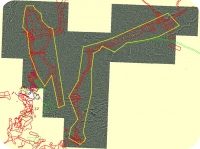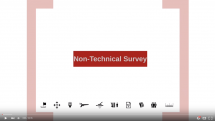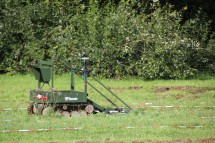Landmine and UXO Threats
Humanitarian Demining is a thorough, time-consuming process that seeks to pinpoint the locations of all mines so that the land or sea area in question may be safely returned to its original use. A comprehensive approach to ensuring this process is carried out effectively is vital.
 Even if only a small handful of mines remain undiscovered, incomplete demining can actually lead to increased civilian casualties as local people return to an area they previously avoided, under the impression that it has been made safe.
Even if only a small handful of mines remain undiscovered, incomplete demining can actually lead to increased civilian casualties as local people return to an area they previously avoided, under the impression that it has been made safe.
In this context demining is one of the mine action 'tools'. Coordinated by Mine Action Coordination Centres established in different regions under the auspices of the United Nations, civilian mine clearance agencies are tasked to undertake the demining process.
 In post-conflict areas, minefields are often contaminated with a mixture of explosive remnants of war (ERW), which include unexploded ordnance (UXOs), as well as landmines. In relation to this, the humanitarian clearance effort is often referred to as 'battle area clearance'.
In post-conflict areas, minefields are often contaminated with a mixture of explosive remnants of war (ERW), which include unexploded ordnance (UXOs), as well as landmines. In relation to this, the humanitarian clearance effort is often referred to as 'battle area clearance'.
In some situations, landmine clearance is a necessary process that must be undertaken before any other humanitarian programmes can be initiated.
A large-scale international effort has been made to evaluate existing and new technologies for humanitarian demining, notably by the EU, US, Canadian and Japanese governments and by the Mine Action Centres of mine-infested countries.



